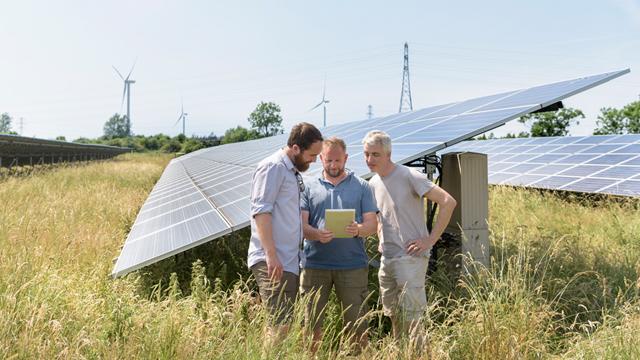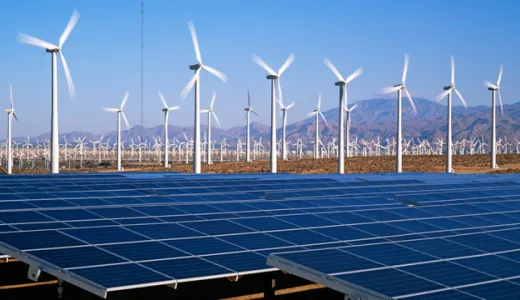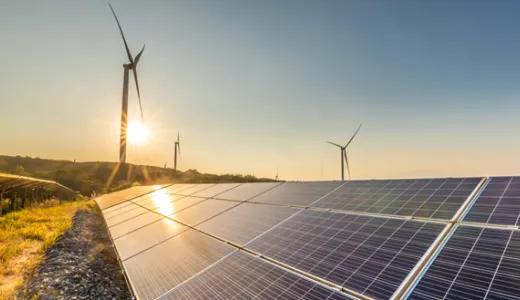How much of the UK’s energy is renewable?
With the UK aiming to reach net zero by 2050, a crucial part of the strategy is to transition to an electricity system with 100% zero-carbon generation and much of this is expected to come from renewable energy.
Renewable energy is already part of our electricity mix (the different energy sources that make up our electricity supply), but how much are we using currently and how much more will we need in order to reach net zero?
Why is renewable energy important?
Clean power generation is front-and-centre of the UK’s strategy to reach net zero by 2050, with the government setting energy providers a target for all electricity to come from 100% zero-carbon generation by 2035.
Burning fossil fuels to create electricity has long been a major contributor in the emission of greenhouse gases (GHGs) into our atmosphere. As renewable energy sources emit low or no carbon emissions, they are considered vital in the race to tackle climate change.
What renewables are used to generate electricity?
Today, there are four main renewable energy sources used to power the UK: wind, solar, hydroelectric and bioenergy. They harness the natural power of the sun, our weather, our waterways and tides, and organic materials to generate electricity.
Currently, the majority of the electricity entering the national grid from a single energy source is natural gas. Natural gas is a largely imported fossil fuel and can emit harmful GHGs, such as carbon dioxide (CO2), when burned to generate electricity.

How much of our energy currently comes from renewable sources?
Today, renewable energy sources make up a significant proportion of the electricity mix that powers our homes and businesses. And the UK is well on its way to creating an electricity system that’s wholly based on renewable and carbon-free sources.
2020 marked the first year in the UK’s history that electricity came predominantly from renewable energy, with 43% of our power coming from a mix of wind, solar, bioenergy and hydroelectric sources.
On 15 May 2023 the UK produced its trillionth kilowatt hour (kWh) of electricity generated from renewable sources – enough to power UK homes for 12 years based on average consumption. While it took 50 years to reach this milestone, based on current projections it will take just over five years to reach the next trillionth kWh.
How has our use of renewables changed?
By the end of 1991, renewables accounted for just 2% of all electrical generation in the UK. By 2013 this figure had risen to 14.6%.
2017 placed Britain into the position as one of Europe’s leaders in the growth of renewable energy generation. Only countries like Iceland, Norway and Sweden, who had more established renewable schemes, used more on a relative scale.
In 2019, zero-carbon electricity production overtook fossil fuels for the first time, while on 17 August renewable generation hit the highest share ever at 85.1% (wind 39%, solar 25%, nuclear 20% and hydro 1%).
In 2023, individual renewables contributed the following*:
- Wind power contributed 29.4% of the UK’s total electricity generation.
- Biomass energy, the burning of renewable organic materials, contributed 5% to the renewable mix.
- Solar power contributed 4.9% to the renewable mix
Hydropower, including tidal, contributed 1.8% to the renewable mix.
Breaking records: The UK’s renewable energy in numbers*2022 was the UK’s highest year on record for zero carbon generation so far at 138 terawatt-hours (TWh), with 133TWh generated in 2023, and the records for renewables continue to come.
|
How long will it take to switch to renewable energy?
It’s important to remember that the aim is not for renewables to be our sole provider of energy, but they will play a major part in the energy mix alongside other clean and green energy sources.
This said, the UK looks on track to continue to increase renewable generation.
It’s anticipated that the UK’s renewable capacity will increase dramatically over the coming years. Plans are already in action to increase offshore wind’s output to 50GW by 2030 – helped by a £200 million government cash injection and financial incentives. Meanwhile, solar capacity could grow to roughly 70GW in the same period.
Combine renewables with other low-carbon electricity sources, such as nuclear (14.2% in 2023), and it indicates that our green infrastructure is heading in the right direction to be capable of reaching the government’s 2035 target; and ultimately reaching net zero in the specified time frames.

Connecting more clean and renewable energy to power the things you love
Last updated: 17 Jan 2024
The information in this article is intended as a factual explainer and does not necessarily reflect National Grid's strategic direction or current business activities.



